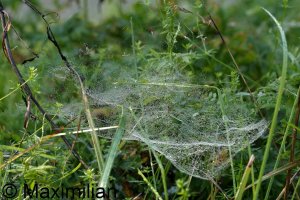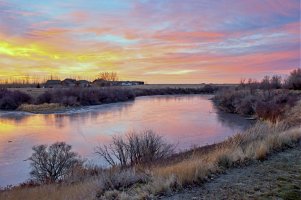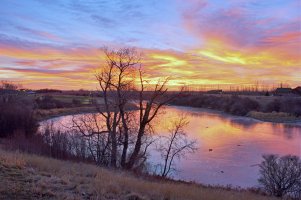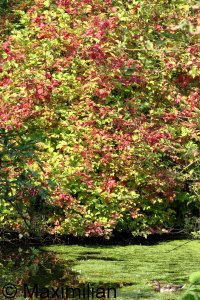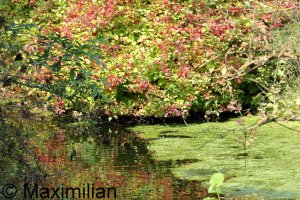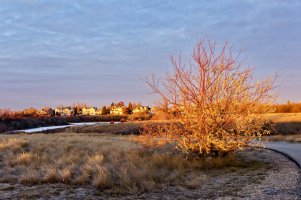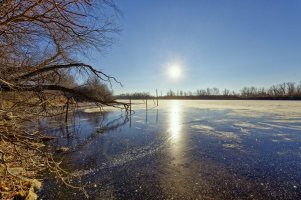You are using an out of date browser. It may not display this or other websites correctly.
You should upgrade or use an alternative browser.
You should upgrade or use an alternative browser.
Autumn/Fall 2023
- Thread starter Maximilian
- Start date
Upvote
0
I couldn't decide which on I like more, portrait or landscape perspective.
Both are very nice!
Upvote
0
I see three points to consider.I couldn't decide which on I like more, portrait or landscape perspective.
View attachment 213005View attachment 213006
The exposure is more pleasing for me on the vertical.
The duck in the horizontal photo is more of a distraction
The reflections on the horizontal are more noticeable
Upvote
0
Upvote
0
Here are two images of Autumn colours in the English Lake District, at Loughrigg Tarn, about 45 minutes after sunrise, that I thought some people might find interesting. The shots are taken on two different cameras, but with the same lens and polarising filter, (with exactly the same degree of polarisation), from the same position, and are taken within a few minutes of each other.
One camera was a 5DS, and the raw file was converted using a "Kodak Portra 800" simulation. The other was taken on a 1n loaded with Kodak Portra 800 film. The lens in each case was a Tamron 45/1.8 and a Hoya polarising filter.
The RNI Portra profile has done a pretty good job of catching some of the film's colour characteristics. The 5DS is 50mp "resolution", the Portra 800 film in 35mm format is probably around 4mp, maybe 6 in terms of just resolution. It is interesting that despite the very low resolution, the colour fidelity and definition of the Portra is very good, reference the fallen Autumn leaves on the left hand bank, where they are lying in shadow, and the film has done a pretty good job of defining their colour, whereas the Bayer Array calculation of the 5DS has lost them to the grass background. Also on a different frame, the film has recorded faithfully the yellow / orange beak of the swan whereas the digital has averaged it to pretty much the background. Incidentally the same result comes from other and "standard' Adobe converters and profiles.
Yes, I know - sacrilege to any 35mm film shooter; I cropped away the top and bottom.
The EOS 1n
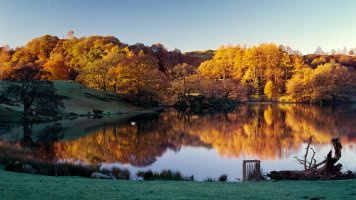
The 5DS
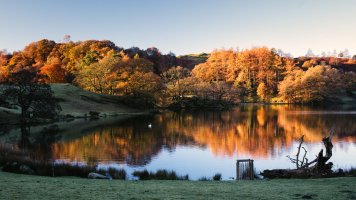
One camera was a 5DS, and the raw file was converted using a "Kodak Portra 800" simulation. The other was taken on a 1n loaded with Kodak Portra 800 film. The lens in each case was a Tamron 45/1.8 and a Hoya polarising filter.
The RNI Portra profile has done a pretty good job of catching some of the film's colour characteristics. The 5DS is 50mp "resolution", the Portra 800 film in 35mm format is probably around 4mp, maybe 6 in terms of just resolution. It is interesting that despite the very low resolution, the colour fidelity and definition of the Portra is very good, reference the fallen Autumn leaves on the left hand bank, where they are lying in shadow, and the film has done a pretty good job of defining their colour, whereas the Bayer Array calculation of the 5DS has lost them to the grass background. Also on a different frame, the film has recorded faithfully the yellow / orange beak of the swan whereas the digital has averaged it to pretty much the background. Incidentally the same result comes from other and "standard' Adobe converters and profiles.
Yes, I know - sacrilege to any 35mm film shooter; I cropped away the top and bottom.
The EOS 1n

The 5DS

Upvote
0
Beautiful!Here are two images of Autumn colours in the English Lake District, at Loughrigg Tarn, about 45 minutes after sunrise, that I thought some people might find interesting. The shots are taken on two different cameras, but with the same lens and polarising filter, (with exactly the same degree of polarisation), from the same position, and are taken within a few minutes of each other.
One camera was a 5DS, and the raw file was converted using a "Kodak Portra 800" simulation. The other was taken on a 1n loaded with Kodak Portra 800 film. The lens in each case was a Tamron 45/1.8 and a Hoya polarising filter.
The RNI Portra profile has done a pretty good job of catching some of the film's colour characteristics. The 5DS is 50mp "resolution", the Portra 800 film in 35mm format is probably around 4mp, maybe 6 in terms of just resolution. It is interesting that despite the very low resolution, the colour fidelity and definition of the Portra is very good, reference the fallen Autumn leaves on the left hand bank, where they are lying in shadow, and the film has done a pretty good job of defining their colour, whereas the Bayer Array calculation of the 5DS has lost them to the grass background. Also on a different frame, the film has recorded faithfully the yellow / orange beak of the swan whereas the digital has averaged it to pretty much the background. Incidentally the same result comes from other and "standard' Adobe converters and profiles.
Yes, I know - sacrilege to any 35mm film shooter; I cropped away the top and bottom.
The EOS 1n
View attachment 213019
The 5DS
View attachment 213018
Upvote
0
Really interesting comparison. Thank you Sporgon.Here are two images of Autumn colours in the English Lake District, at Loughrigg Tarn, about 45 minutes after sunrise, that I thought some people might find interesting. ...
It is interesting that despite the very low resolution, the colour fidelity and definition of the Portra is very good, reference the fallen Autumn leaves on the left hand bank, where they are lying in shadow, and the film has done a pretty good job of defining their colour, whereas the Bayer Array calculation of the 5DS has lost them to the grass background. Also on a different frame, the film has recorded faithfully the yellow / orange beak of the swan whereas the digital has averaged it to pretty much the background. ...
And still, both are beautiful pictures.
Upvote
0
Similar threads
L
- Replies
- 12
- Views
- 6K
L

